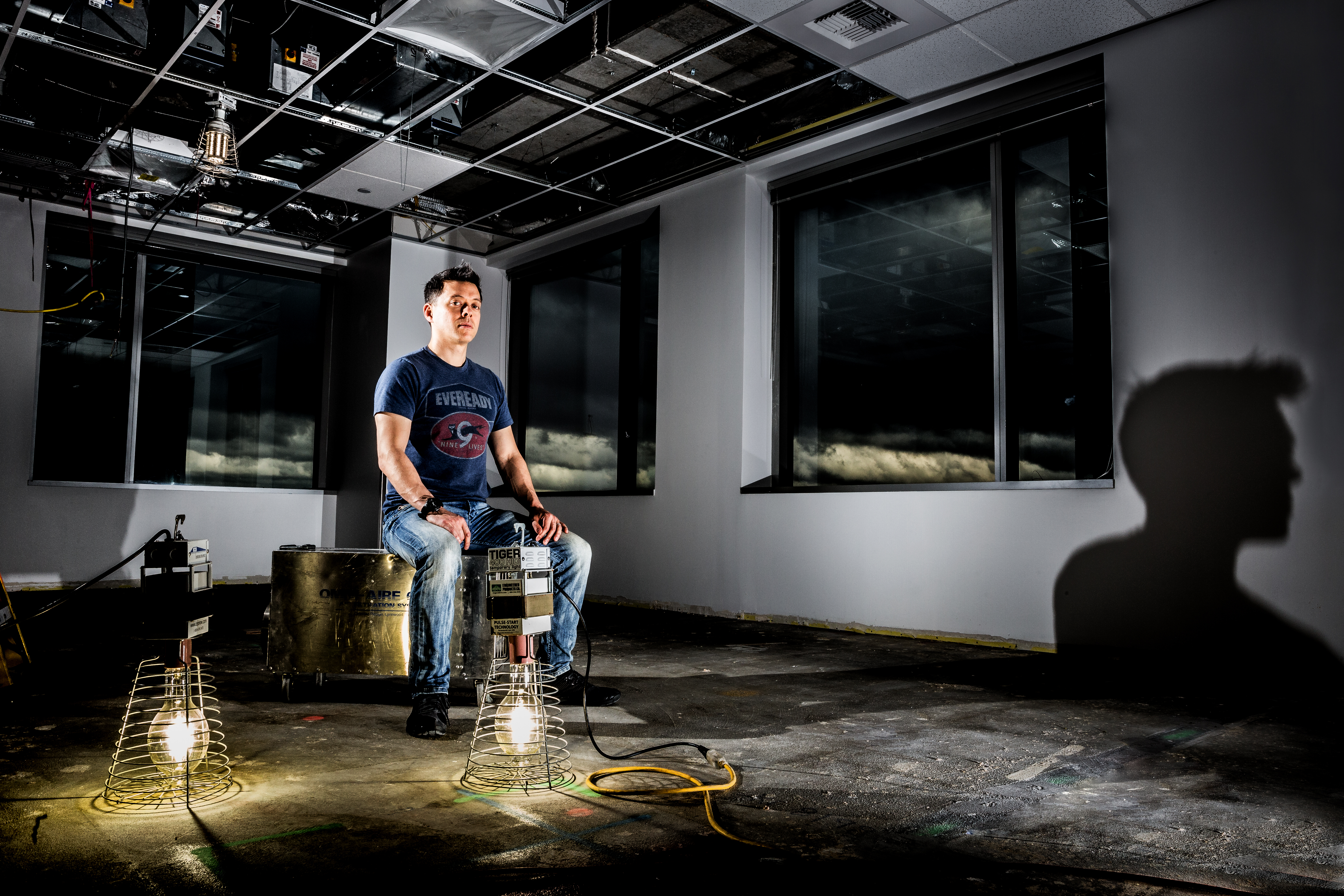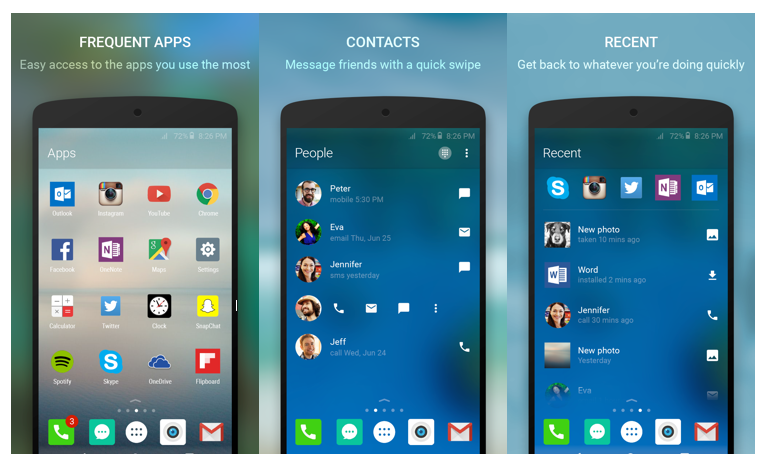
Meet Loop, the team at Microsoft behind Arrow, changing the way they work to make a big impact
Every week, a 10-person team in Bellevue – which just released the Arrow app through the Microsoft Garage – has two meetings. On the surface this doesn’t sound that different. At many companies, including Microsoft, meetings are a way of life. What makes it different is that these are the only two meetings the team has. And even rarer is what they do at the second meeting: They don’t talk about work.
The team, codenamed “Loop,” uses the first meeting to “open the loop,” with that week’s goals, customer feedback and other tactical conversations. That’s the kind of meeting familiar to a lot of teams. At the end of the week, they do something different in “closing the loop.” They use this time to connect as a team, to talk about what else is going on in their lives. They talk about their feelings and how they’re showing up. It’s a bonding experience that has forged trust and channeled passion for their projects.
At Microsoft, this is the kind of culture shift that Microsoft CEO Satya Nadella has been enabling. In a mail to the company in 2014, Nadella challenged the company to make “Microsoft the best place for smart, curious, ambitious people to do their best work.” For those in Loop, a subset of Team SIX that formed in April, their startup-inspired approach is their answer to this challenge.
“Ours is a story of hope. If you look around, you see many examples of companies that have made Web scale impact – among the hundreds of millions users – with very small teams,” says Lawrence Ripsher, Loop’s general manager, who came to Microsoft after selling his startup to Microsoft in 2008. “When you’re trying to break through and do something disruptive, you have to go all-in on ideas that improve something 10 times.”
The approach is working. The team created Next Lock Screen last year, a popular lock screen available for Android and more recently, propelled Arrow into reality. Arrow is a streamlined launcher on Android devices that aims to simplify your relationship with your phone. It learns what you use most on your device and makes it easier to get to it, and get back to what you were doing.
As important as achieving goals like the creation of Arrow is the process to get there, which involves a different kind of team dynamic.
“Imagine if you could really trust your co-workers to genuinely have your back. You’d approach work differently, ask for help earlier and not become defensive,” Ripsher says. “I think about an environment where it’s OK to be vulnerable, and you look forward to coming to work.”
While the Loop team is headquartered in Bellevue, Washington, it’s geographically distributed with 20 people in Beijing, and 10 in Bellevue.
One of the Bellevue team is Steve Macbeth, a developer who’s been with Microsoft since 2002 and for several years ran Program Management for Bing’s Ranking and Relevance. He joined Team SIX, bringing his experience of online services, Web relevance and machine learning.
Team SIX, founded by Microsoft Chief Experience Officer Julie Larson-Green two years ago is taking the signals and inferences available from technology today to build new experiences that work across services and platforms. It was out of that group that the Loop team emerged.
“The draw was to take a small number of people and do something big, handpick a team we could do something great with,” Macbeth says. “We wanted to try to innovate in the organization as well as in technology.”
While they come up with different ways to implement their goal, and roles change constantly depending on different skillsets and needs, their vision stays clear and acts as a touchstone for the team.
Macbeth, for one, says he can’t imagine working any other way now.
“When I was in the core of my management experience at Microsoft, I enjoyed going to meetings – at least I think I did at the time – mostly because that’s all I knew,” Macbeth says. “I used to have one two-hour block that wasn’t a meeting, and now when I have a one-hour block of meetings, it’s an hour I can’t be writing code. But in Loop, everybody writes code, that’s the only job anybody has. We build software. It sounds simple on the surface, but it fundamentally changes how you work.”
“It’s improved my life and improved me as a person. Microsoft is becoming a more human place that’s deeply connected with our customers, and this has helped me to do that.”
“There are three qualities that I love about this team: It’s collaborative, fun and non-hierarchical,” says Daniel Chu, a leader on the Loop team based in Beijing who joined Microsoft last year. He says joining the team was one of the best decisions he’s ever made. “Anyone can lead, and everyone can pitch in. Being a flat organization means that everyone is empowered to do his or her work most effectively.”

Outside of work, their bonding spills over into karaoke and dinners.
“We do these things not for the sake of team building, but because we really enjoy each other’s company. That’s a direct result of how we work with each other – passion-killing policies don’t exist here, and great contributions get recognized and celebrated. We enjoy working together to achieve big goals,” Chu says.
Like many of the Beijing team members, Chu had to counter long-established cultural expectations, as well as those he thought would be part of Microsoft’s.
“I panicked at first when Lawrence suggested that we remove many of the things that I’m used to. But I took a leap of faith and tried it out. After trying out this model, it’s now very difficult for me to go back to the traditional executive review model,” Chu says. “This new way of working is incredibly productive, and we see results and outcomes being produced at the end of every session. We build working prototypes and products more rapidly, rather than walk out of meetings empty-handed.”
Chu echoes the common thread running through Loop: the importance of trust and empathy to working without barriers. It also helps make products that resonate with people.
On this team, problems aren’t hypothetical. They find answers to vexing, real issues that people face today – including those experienced by the team themselves. They expanded their field of vision by building an online community of more than 50,000 people. This ensured they found others who shared those problems and directly included them in the product development process.
Ripsher says their approach is “to solve a problem you have, otherwise you’re always going to be one step removed from the idea.” Arrow is a great example, solving problems everyone on the team has experienced, which created “much greater empathy for our users.”
The Loop team is all about real world struggles and solutions. Even when the team interviews candidates to join them, they invite them to solve a real problem the team is facing. Doing so reveals how the person approaches development and how they work with the team. Most of all, the process taps into what a person is passionate to work on.
“It’s really changed the way people show up at work, the way we bonded as a team,” Macbeth says. “There’s more humanness within the team, we really get to know each other on a personal level.”
The Loop team is small but representative of the cultural shift happening within Microsoft. As Nadella wrote in 2014, “Culture change starts with one individual at a time,” and Ripsher and the rest of the Loop team are betting that by changing their culture, it will lead to a much larger transformation.
Lead image: Microsoft Loop team photographed in their new work space, which is under construction in Bellevue. (Photography by Scott Eklund/Red Box Pictures)
















